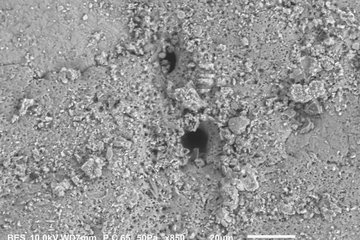A model for predicting evolution
Scientists predict the frequency and location of mutations that allow a bacterium to adapt to new environmental conditions.
Evolutionary adaptations to new environmental conditions are based on changes in the genome, whereby the same adaptation can result from a wide range of mutations, which is why it has not been possible to accurately predict which specific genes will change until now. Researchers at the Max Planck Institute for Evolutionary Biology in Plön have been studying the evolution of the Pseudomonas fluorescens bacterium in the laboratory in real time. Paul Rainey and his team have developed a model, which allows the frequency of occurrence and location of a given mutation to be calculated. A comparison with the mutations that actually arose in the laboratory demonstrates that the researchers can use the model to make accurate predictions about which evolutionary paths the bacterium will follow. Such predictions could be important in future research concerning the development of resistance to antibiotics or the formation of cancer cells.

For scientists to predict how the evolution of an organism will proceed it is necessary to know which mutations in the genome are required to achieve the adaptation in question. For a long time, there appeared to be no hope of achieving this: both the organisms and their interactions with the environment seemed far too complex. For this reason, many researchers suspected that the course of adaptive evolution is impossible to predict. However, the same evolutionary adaptations can arise repeatedly, so evolution does seem to be subject to certain rules.
The scientists from Plön and Uppsala have been trying to identify these rules and whether they can be used to predict adaptations and the underlying gene mutations. They are able to study evolution in the laboratory in real time with the aid of the Pseudomonas fluorescens, as the bacteria always adapts to the absence of oxygen producing wrinkled bacterial colonies. The researchers know the three genetic networks for this adaptation in which the mutations occur most frequently, which means they can decode the way in which the bacterium is able to adapt.
Model predicts adaptive mutations
Paul Rainey and his colleagues have developed a way of modelling regulatory pathways that allows them to predict how often evolution makes use of one of the three networks and which genes mutate in the process. To test and verify the model, they compared the predicted mutations with those that actually occurred in the laboratory. The researchers discovered that the mutations do not occur evenly throughout the genome, but rather that they accumulate at certain points. The model can use these mutation “hotspots” to make more accurate predictions about which of the bacterium’s genes will mutate. The scientists have even discovered new mutations in this way, which are so rare that they have not yet been observed in the real bacteria in the laboratory.
Using this model, the scientists are able to predict the evolution of Pseudomonas fluorescens to a certain extent. However, their work also demonstrates the limits that attempts to predict evolution currently face: to make reliable predictions, the researchers not only have to know the mutational paths that lead to a given adaption and the hotspots where mutations accumulate, but also the effects of the mutations on the fitness of the organism. Yet predicting the “fitness effect” is not currently possible without empirical data. “The ability to predict evolution is still in its infancy”, Rainey explains: “but it is very likely that we will be able to transfer our model to other organisms in future”. It may then be possible to predict the underlying evolutionary processes that result in antibiotic resistance, infectious diseases or even cancer.
MN/HR












